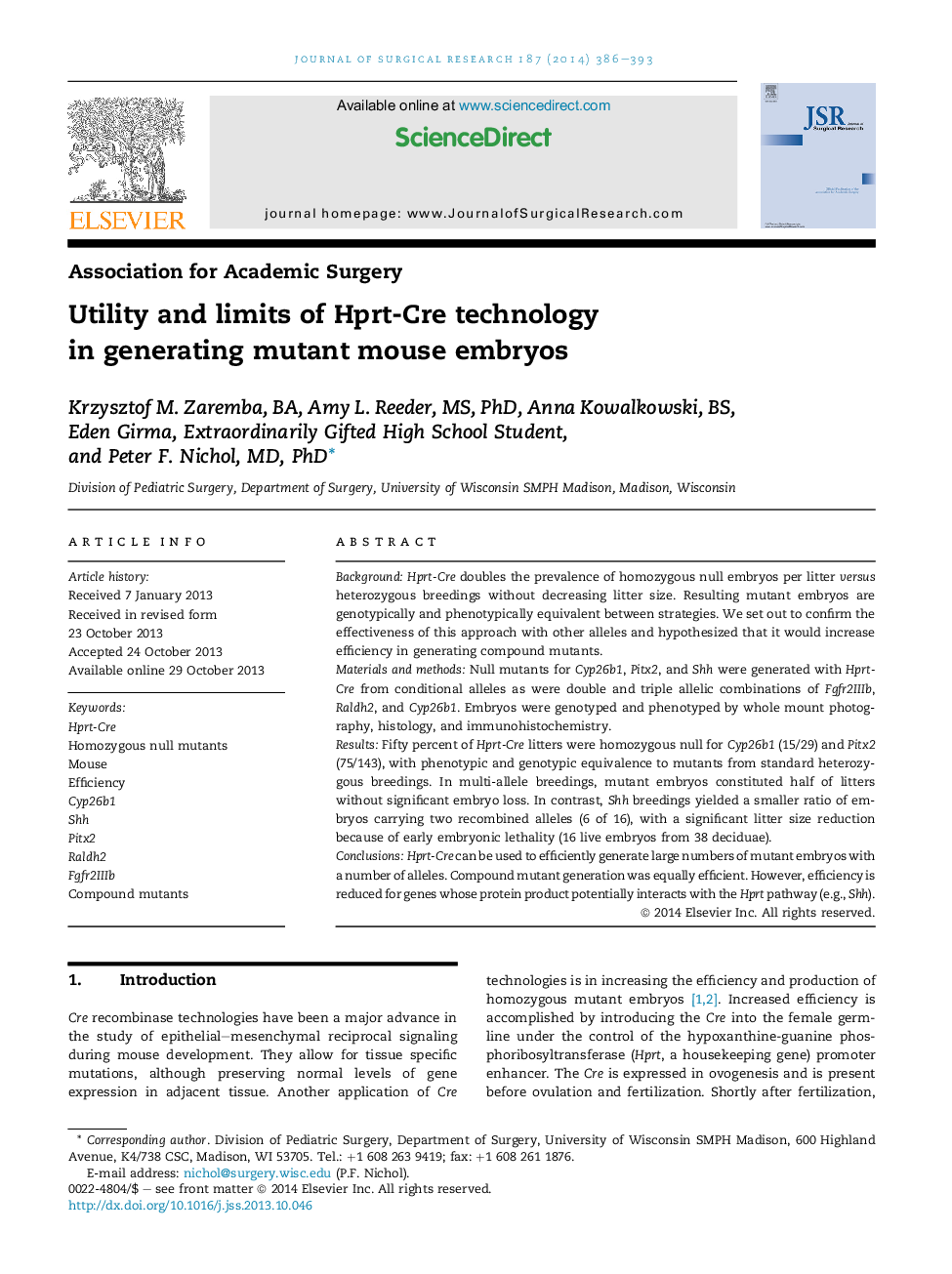| کد مقاله | کد نشریه | سال انتشار | مقاله انگلیسی | نسخه تمام متن |
|---|---|---|---|---|
| 4300407 | 1288420 | 2014 | 8 صفحه PDF | دانلود رایگان |

BackgroundHprt-Cre doubles the prevalence of homozygous null embryos per litter versus heterozygous breedings without decreasing litter size. Resulting mutant embryos are genotypically and phenotypically equivalent between strategies. We set out to confirm the effectiveness of this approach with other alleles and hypothesized that it would increase efficiency in generating compound mutants.Materials and methodsNull mutants for Cyp26b1, Pitx2, and Shh were generated with Hprt-Cre from conditional alleles as were double and triple allelic combinations of Fgfr2IIIb, Raldh2, and Cyp26b1. Embryos were genotyped and phenotyped by whole mount photography, histology, and immunohistochemistry.ResultsFifty percent of Hprt-Cre litters were homozygous null for Cyp26b1 (15/29) and Pitx2 (75/143), with phenotypic and genotypic equivalence to mutants from standard heterozygous breedings. In multi-allele breedings, mutant embryos constituted half of litters without significant embryo loss. In contrast, Shh breedings yielded a smaller ratio of embryos carrying two recombined alleles (6 of 16), with a significant litter size reduction because of early embryonic lethality (16 live embryos from 38 deciduae).ConclusionsHprt-Cre can be used to efficiently generate large numbers of mutant embryos with a number of alleles. Compound mutant generation was equally efficient. However, efficiency is reduced for genes whose protein product potentially interacts with the Hprt pathway (e.g., Shh).
Journal: Journal of Surgical Research - Volume 187, Issue 2, April 2014, Pages 386–393